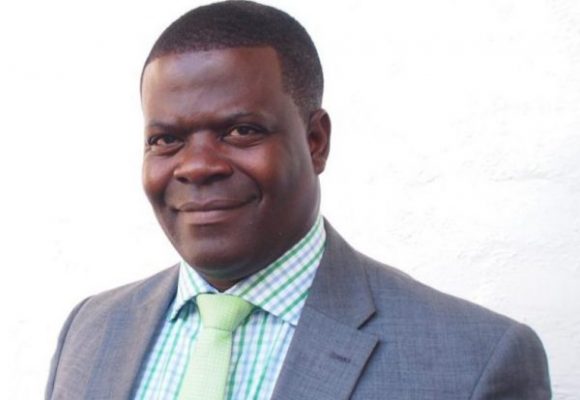Zim to promote nuclear power

Zimbabwe will have a draft sustainable energy policy by year end that among other critical issues, will promote greater use of renewable sources including nuclear power, according to Energy and Power Development Minister Fortune Chasi.
Chasi disclosed the policy dubbed – National Integrated Energy Resource Plan in Parliament on Wednesday.
Zimbabwe is now being assisted by the World Bank and the African Development Bank to develop the policy.
“We are working on a National Integrated Energy Resource Plan,” said Chasi. “We had a false start with regards to this process and we are now working with development agencies like the World Bank and the African Development Bank who are helping us to come up with the policy.
“I am not able at this moment in time to precisely say when this work will be concluded but all of us who are involved in this matter understand the urgency of the matter and I am very hopeful that by year end we will have our first draft.”
Zimbabwe, which currently generates about half of its electricity from coal with a number of thermal projects lined up for implementation, is holding in check the use of coal for power production in line with its pledge to reduce its carbon footprint.
Zimbabwe is a signatory to the Paris climate change accord agreed in 2015, which seeks to hold the increase of the global average temperature to below 2 degrees Celsius.
Coal generation needs to fall by 11 percent a year to keep within a warming limit of 1,5 degrees Celsius.
According to research by independent climate think tank, Ember, global carbon dioxide emissions from the power sector fell by 2 percent last year, the biggest fall since 1990 due to reduced coal usage in Europe and the United States.
Thermal power generation fell by 3 percent globally, with Europe registering the biggest fall of 24 percent due to shift to renewables, while US registered a 16 percent drop because of more competitive gas.
China was responsible for half of global thermal generation.
The International Renewable Energy Agency’s Renewable Capacity Statistics 2020 shows that new renewable power — principally hydro-power, wind, solar, geothermal, and bio-energy — accounted for 72 per cent of all power expansion last year.
Renewable energy expanded by 7,6 per cent in 2019, adding 176 gigawatts (GW) of generating capacity globally, marginally lower than the 179 GW added in 2018.
But that electricity accounts for only about 20 per cent of energy used. The rest is mainly fossil fuels: coal, oil and gas.
Solar and wind dominated renewable capacity expansion, jointly accounting for 90 per cent of all net renewable additions in 2019.
Hydro-power accounted for the largest share of the global total, with a capacity of 1,190 GW. It increased minimally by 12 GW (up 1 per cent on 2018), possibly because some large projects missed their expected completion dates. China and Brazil accounted for most of the expansion, IREA said.
Other renewables included 124 GW of bio-energy, 14 GW of geothermal, and 0.5 GW of marine energy.
Off-grid capacity grew by 160 MW (up 2 per cent) to reach 8,6 GW in 2019. Bio-energy accounts for 40 per cent of off-grid capacity. China accounted for half of all new capacity in bio-fuel use.
Asia accounted for 54 per cent of new capacity in 2019 or 44 per cent of the global total.
Capacity in Europe and North America expanded by 6,6 and 6 per cent respectively.
Oceania and the Middle East were the fastest growing regions (up 18,4 and 12,6 per cent respectively), although their share of global capacity is small.
Africa only increased by 2,0 GW (up 4,3 per cent) to reach 48 GW.
Over the past few years, Zimbabwe has witnessed modest increase in renewable energy investments, particularly solar, large and mini hydro projects.
Some of the notable climate smart projects include the expansion of the of Kariba hydroelectric plant, Harava 20 MW solar project in Seke which is nearing completion and Centrigand’s Nyabira solar plant which is feeding 2,5 MW onto the national grid.
In light of rolling power cuts, some corporates and households invested in solar .
The development of wind power generation has, however, moved at a snail space. In 2017 Zimbabwe abandoned the exercise to conduct a wind resource measurement on identified three sites with highest energy potential as the price bids received from companies that tendered to carry out the feasibility study were too high.
The purpose of the project was to create an accurate knowledge base of the wind resource available in Zimbabwe through measurement and analysis to help the country plan for renewable energy projects. The intention was to measure wind speed and direction at the sites and remotely collect data for 24 months at a hub height of 100 meters.
The data and information generated was expected to be used in designing large scale wind power projects, off grid or mini grid electrification, water pumping and climate research.
Minister Chasi said plans remain of course to develop power by processing uranium. Zimbabwe, previously not known to have any deposits of uranium discovered some deposits in Hwange and Binga.
Last year, Zimbabwe agreed terms with Russia to engage in uranium exploration and enrichment for power generation_Business Weekly


